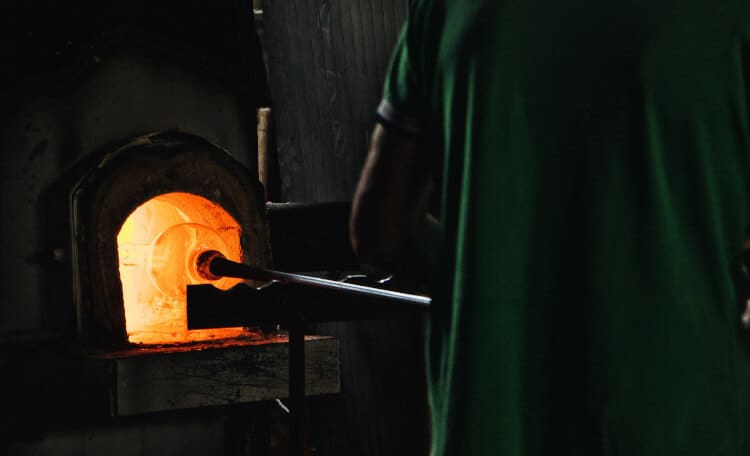When thinking of Venice, the first images that pop into our minds are the charming canals overlooked by elegant buildings and the colorful houses of Murano, where glassblowers do their lampworking magic.
Murano is a stone’s throw from Venice. Its glass is famous worldwide for high-quality craftsmanship with an ancient tradition. Entering one of its glassblowing and lampworking workshops is a magical experience that takes you back in time.
Here are five facts you probably did not know about Murano and its lampworking tradition!
1. Why glassworkers moved from Venice to Murano

In 1291, the Doge (the ruler of Venice) ordered all glassmakers to move their furnaces to Murano. The official reason was to avoid the frequent fires that plagued Venice. However, many experts believe that the decision was taken to jealously protect the knowledge and techniques of glassworkers so that they could work in an isolated place away from the prying eyes of foreign travelers and merchants. While benefiting from many privileges, glassmakers were forbidden to leave the Republic of Venice. This way, Murano monopolized high-quality glassmaking for centuries, developing and refining many techniques.
2. The difference between glassblowing and lampworking
As explained by workingtheflame.com:“While glassblowing and lampworking are both glassworking techniques intertwined throughout history, they each have unique processes, tools, and finished outcomes. Glassblowing is done with large tools and thus produces larger items than lampworking, in which smaller tools are utilized to produce delicate items like beads. The process of glassblowing involves blowing air into the glass to shape it, while lampworking relies on rolling and twirling glass on a mandrel to achieve the desired shape. Therefore, the items made by lampworkers are more solid than glass blown objects, which are hollow.”
3. Murano is not an island
Although it’s common to say “Murano Island” to simplify things, Murano is actually made up of seven individual islands connected by pedestrian bridges. Like in Venice, there are no cars, and you can move around the canals via gondola or water taxi. Murano is small enough to explore on foot.
4. Why is Murano glass so special and expensive?

Simply put, the craftsmanship of Murano’s artisans is unparalleled. They carefully and passionately create versatile artworks in all shapes and sizes using century-old techniques, each creation different from the other. Quality is also paramount: while many inferior Murano-style imitations are available, real Murano glass is unmatched in quality!
5. Authentic experiences to learn about Murano lampworking
Murano is home to the beautiful Museo del Vetro. The Glass Museum was founded in 1861 when the darkest period of Murano’s glassmaking history had been overcome, following the fall of the Republic of San Marco (1797) and the subsequent years of foreign rule. Its collection is one of the most complete in the world, ranging from antiquity to 20th-century works. When visiting Murano, enter a local glass workshop to see the maestri vetrai at work between the furnace and the mesmerizing techniques that give birth to extraordinary objects. If you want to learn to make glass beads or objects of any kind, you can join a Murano lampworking course in Venice! Don’t miss the opportunity to get closer to glassmaking, a source of knowledge and wealth for an entire community.
Do you want to know more about our courses in Venice?
Contact us: we will be delighted to assist you by chat, telephone or email. You can also request a virtual meeting to meet us online.
Sources:
originalmuranoglass.com
workingtheflame.com



